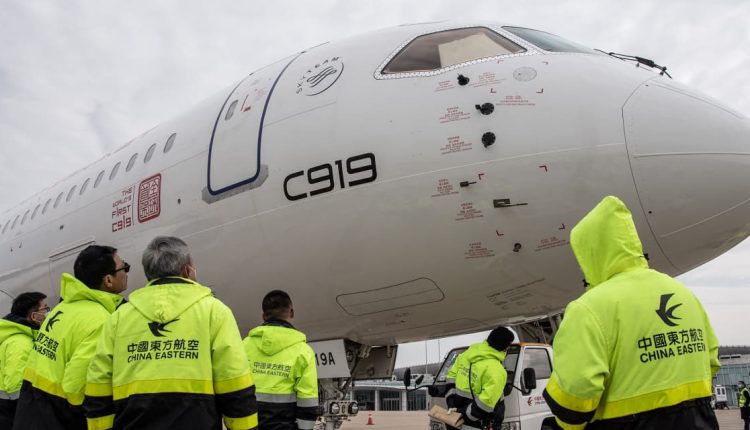Even as China struggles with daunting financial and demographic problems, it has been going from strength to strength technologically. The No. 2 economy dominates solar-energy and electric-vehicle supply chains. It struck back in electronics with the latest Huawei phone powered by domestic 7-nanometer semiconductors.
Now comes civil aviation’s turn, Beijing claims. The C919—state-owned Commercial Aircraft Corporation of China’s would-be midrange answer to Boeing’s 737 and Airbus’ A-320—lately bagged its first big order, for 100 planes, from
China Eastern Airlines.
“The C919 is expected to break the market duopoly of Boeing and Airbus,” the official China Daily crowed.
Not quite. The C919 is no match for the established workhorses of the sky. “From a design perspective, it can’t hold a candle to the 737 or A-320,” says Scott Kennedy, senior adviser in Chinese economics at the Center for Strategic and International Studies.
Even if it could, Comac, as the manufacturer is known, will need years if not decades more to gear up production. “Airbus or Boeing can produce 100 airplanes a month,” says Scott Hamilton, founder of aerospace consultant Leeham. “The C919 is lucky to produce two.”
The new aircraft also needs safety certifications outside China to fly internationally, its logical role with a 3,500-mile range. That won’t happen overnight either, says Shukor Yusof, founder of Malaysia-based consultant Endau Analytics.
“The plane has to clock hours and meet stringent tests,” he says. “They can’t overcome these hurdles in a short space of time.”
The C919’s emergence is still bad news for
Boeing
(ticker: BA). The U.S. giant reaped a quarter of its sales from China in better days, Hamilton says. Washington’s trade war has slowed that to a trickle.
Airbus
(AIR.France) has practiced more effective diplomacy. CEO Guillaume Faury tagged along on French President Emmanuel Macron’s visit to Beijing in April and announced a new assembly line at the company’s Tianjin factory. That’s probably one reason Airbus’ stock has nearly regained prepandemic levels, while Boeing’s is down 40%.
The C919 may not hold a candle to the 737 in an open market. But China, which will probably order thousands of new planes this decade, is hardly an open market. The top three airlines are state-owned and will ultimately buy what the government tells them to. Beijing may also “arm-twist” regional tourist destinations like Indonesia or Thailand into early certification and orders for the C919, Shukor says.
That’s only half the politics involved. Some 70% of the C919’s components come from Western suppliers, including U.S. industrial icons such as
General Electric
(GE), which makes the engines jointly with France’s
Safran
(SAF.France);
Honeywell International
(HON), which provides wheels and brakes; and navigation from Rockwell Collins (COL).
The U.S. Defense Department included Comac on a potential sanctions list in the last days of the Trump administration. Successor Joe Biden has left the C919 supply chain intact. That’s a good call, CSIS’ Kennedy says, with little chance that well-known civilian technology could advance China’s military planes. “I haven’t heard anyone from the military say the C919 is a threat,” he says.
Washington’s dovish stance also keeps the door open for Chinese rapprochement with Boeing.
Building airplanes is the ultimate industrial long game, and China is determined to master it, eventually. “It took 40 years for Airbus to reach parity with Boeing,” Hamilton says. “China will be viable in another generation or two.”
Until then, it’s complicated.
Read the full article here

